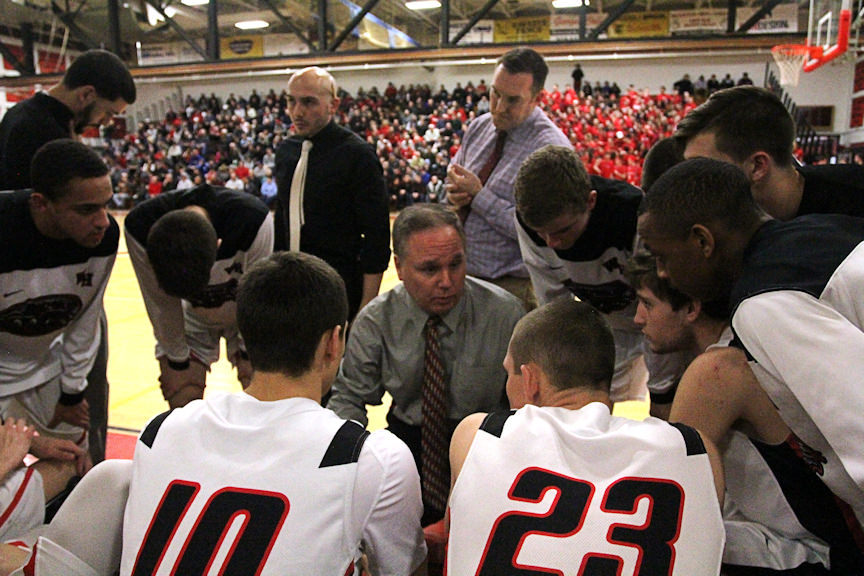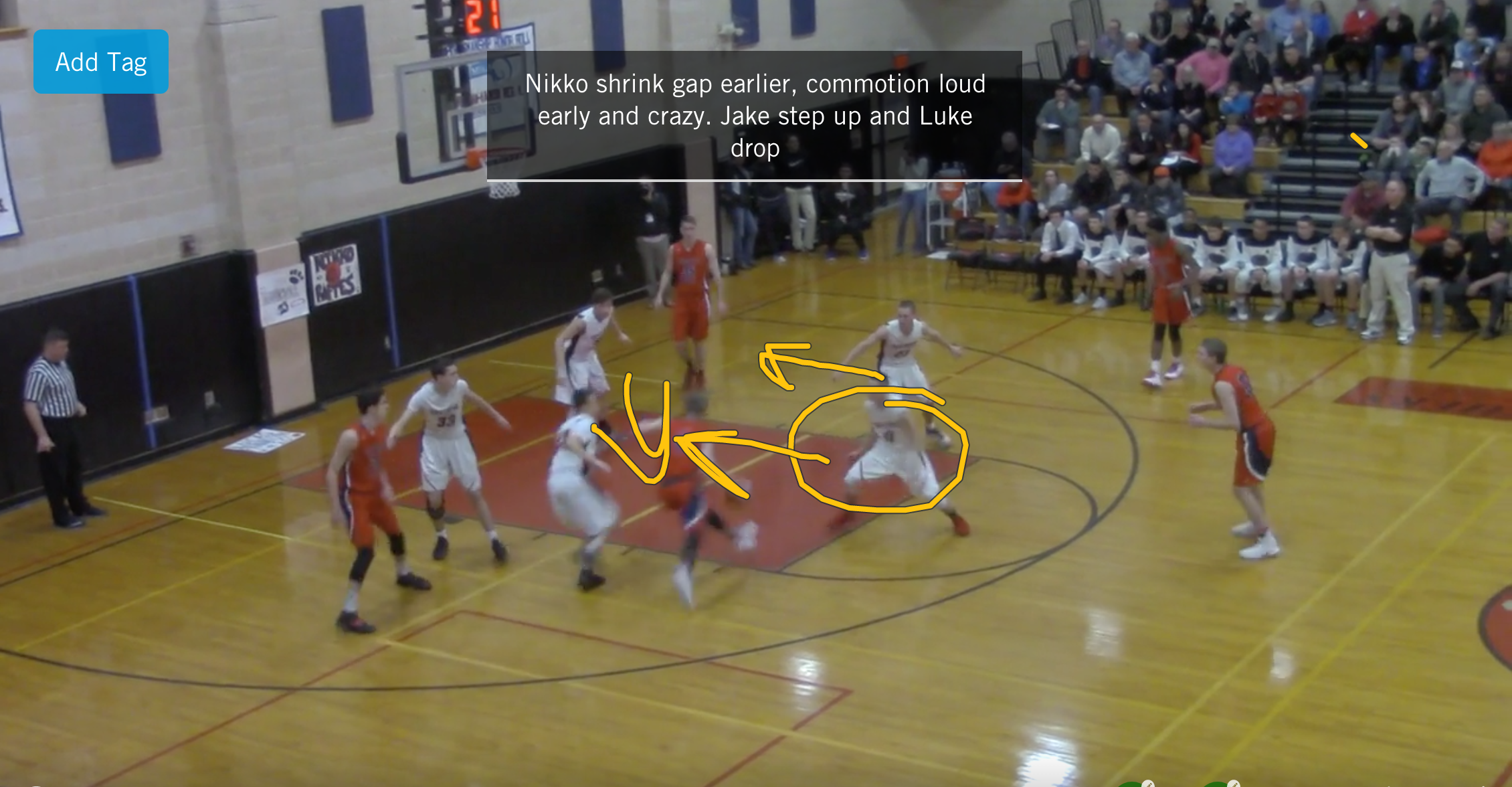No Experience, No Problem: Bob Rodgers’ Clever Use of Video Kept His Team on Track
With almost no returning players from the season before, the coach knew he’d have to make up for experience in other ways. Video proved to be the answer.
Coming off of a strong 2015-16 season that concluded with an appearance in the Massachusetts state playoffs, little was expected of Whitman-Hanson High School last year. Graduation hit the Panthers hard, as they returned only 4.4 percent of their scoring. Only two players on the roster had ever entered a varsity game.
Regression seemed imminent, but Whitman-Hanson missed that memo. The Panthers instead built on their success, advancing to the Division 2 state semifinals at the TD Garden in Boston.
“I think most people didn’t even think we’d make the state tournament, much less win a league championship and a sectional and go to the Boston Garden,” Rodgers said. “I think it’s because we’re able to emphasize the little details that most people wouldn’t even realize. But we’re able to do that because the work we do behind the scenes.”


Rodgers requires his players to bring a notebook to practice every day. He will routinely pause certain sessions and have the players pull up chairs to rewatch certain things on video. Rodgers even has the players record drills with their cell phones so they can review certain actions.
“One time this year a player closed out and we said, ‘Your hands were down.’ And he said, ‘No, no, my hands were up.’ We coach our guys to not make excuses or question a coach. Right away it’s very easy to stop that debate. ‘Let’s go to Hudl and take a look at it. Oh, wow, look where your hands are.’ What ends up happening is kids don’t question stuff as much because they know it’s recorded.”
The Whitman-Hanson players are required to watch each game video, peppered with as many as 200 comments by the coaching staff. Rodgers will give them four or five things to find during the viewing, making each watch like “a little treasure hunt.”
Rodgers couldn’t have predicted he’d be so reliant on Hudl a few years ago. Frustrated with the product, he turned to one of Hudl’s competitors for a few seasons. But after experiencing disappointment there as well, he turned back and was blown away by how Hudl had completely upgraded its basketball offering.
Not only was the product easier to use, but Rodgers became infatuated with Hudl Assist. The data was accurate and at times was already delivered by the time he got home from a post-game dinner with his staff. Rodgers used this saved time to dig deeper into opponent scouting, which shaped the way he designed that week’s practices.
“I started playing around with Hudl a little bit,” Rodgers said. “I realized a lot of the things Hudl has in terms of being able to know when my players sign on and how long they’ve been on, my ability to write on my iPad, to record my practices in real time… they’re perfect.
“(Coaches) need to give it a try so they realize just how easy it is to use. That’s the biggest thing for coaches. Some people are a little nervous, but the ease of use is amazing.”
Rodgers doesn’t give Hudl all the credit for Whitman-Hanson’s surprising season - the athletes themselves deserve that praise. But the ease with which he could glean insights from the video made his job much simpler, and the Panthers reaped the benefits. Hudl proved to be the ultimate teaching tool.
“Kids learn by seeing,” he said. “Everybody has different learning styles, but everyone does well when they actually see it on video. One player doesn’t necessarily have to see what another player sees. It’s allowed me to be much more efficient with my time and, more importantly, with my players’ time.”